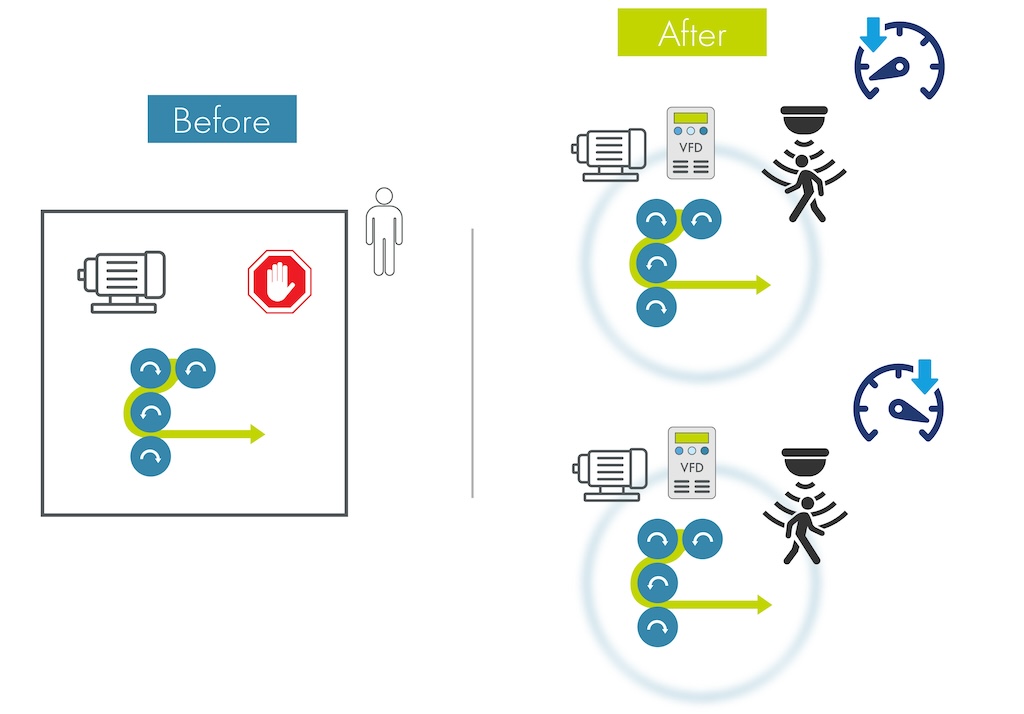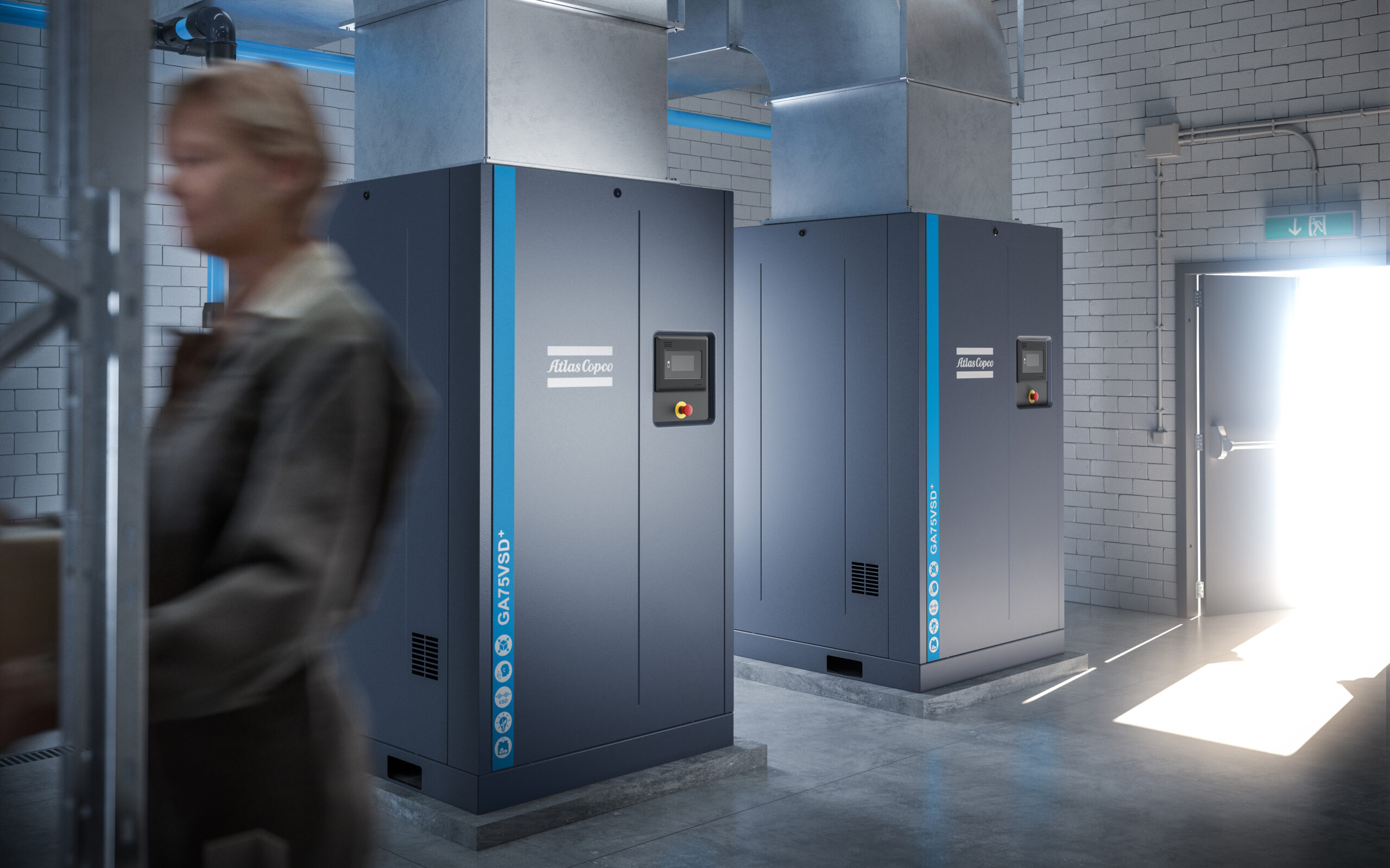Second of two parts As energy costs rise around the world, the incentive for facilities to operate their equipment more efficiently will multiply. There are mandatory means (regulations) that authorities use to enforce conservation, and compensatory means (special rate tariffs) that reward users for using less energy.
Second of two parts
As energy costs rise around the world, the incentive for facilities to operate their equipment more efficiently will multiply. There are mandatory means (regulations) that authorities use to enforce conservation, and compensatory means (special rate tariffs) that reward users for using less energy. In either case, decreasing energy consumption decreases the bottom line costs to the user.
The first step industrial facilities should take toward effectively reducing energy costs is to evaluate their motors — the number one energy consuming culprit. Motors in industrial facilities consume by far the largest percentage of energy of any electrical device used in the US infrastructure. Tens of billions of kWh are consumed by motors each year, accounting for more than 25% of all electricity sales in the US.
Polyphase induction motors, more than 90% of which are squirrel cage, are the most commonly used. Because of their prevalence throughout the industrial and commercial sectors, polyphase induction motors offer a great potential savings opportunity in both energy and operational costs during the motor’s useful life.
An adequate assessment of the impact that induction motors can have on an energy bill requires a detailed knowledge of the motor’s many operational and electrical parameters. Permanently installed monitoring devices are the most effective tool in the arsenal to reduce energy consumption, especially in motors. Knowing which parameters to monitor and evaluate helps you save energy.
Monitoring your motors
Each motor within a facility operates with some level of distinctiveness from other motors. This distinctiveness may be due to a combination of factors, which include:
-
Nameplate ratings
-
Voltages
-
Load/Application
-
Duty cycle
-
Environment
-
Adjacent loads
-
Impedances
-
Age.
-
The more knowledge that can be accumulated about a motor and how it operates, the easier it is to reduce energy costs associated with that motor. Permanently installed monitoring systems are particularly useful because they are able to capture a great deal of information over the motor’s life — both real-time and historical.
Fig.1
A fundamental issue that can affect a motor’s energy usage is its suitability for the intended application. Motors are designed to operate most efficiently at their nameplate rating. Selecting the wrong motor for a particular application or operating the motor outside its recommended parameters decreases its performance by introducing additional energy losses into the electrical system. Monitoring systems identify many symptoms that result in reduced motor performance including deviations from various nameplate parameters (Fig. 1).
Where to look for savings
Fig.2
There is a wealth of information about a motor’s well-being buried in the characteristics of the electrical signals at the motor’s terminals. With the motor’s nameplate data and these electrical characteristics, it is possible to quantify many energy savings opportunities for a given motor. The fundamental electrical characteristics include the voltage, current and frequency data for each phase. By collecting data on these fundamental characteristics, monitoring devices can provide additional information needed to maximize energy savings. This information includes:
-
Power factor
-
Voltage variations
-
Voltage unbalance
-
Motor load (based on current)
-
Harmonic distortion
-
Frequency deviations.
-
Monitoring systems also have the ability to measure and record temperatures, number of starts, running time and even vibration through the use of I/O modules.
Power factor improvement
The first and most obvious opportunity for motor energy savings is power factor correction. Most monitoring systems provide a wide range of data directly or indirectly associated with power factor including:
-
Displacement power factor (total, and per phase)
-
True power factor (total, and per phase)
-
Distortion power factor (total, and per phase)
-
Min/max power factor
-
Reactive power and energy
-
Real power and energy
-
Apparent power and energy.
-
How does power factor relate to energy savings? Polyphase induction motors use current composed of both resistive and inductive components (Fig. 2). The resistive component includes the load current and the loss current; the inductive component includes the magnetizing current and the leakage reactance. It is possible to cancel out the inductive current component by using capacitance. A capacitor does not affect the magnetizing current or the leakage reactance of the motor. However, it offsets the inductive component at the point in the circuit where the capacitor is installed. As more capacitance is added, the power factor angle, e, becomes smaller until a unity power factor is achieved (e = 0). At a unity power factor, the electrical system is at its optimum performance for maximum power transfer (see “Example 1”). Placing excessive capacitance in the circuit causes a leading power factor condition (e is negative in this case), which can lead to serious complications.
Voltage unbalance
Voltage unbalance is both a leading cause of motor failures and a major contributor to energy losses in motors. The subsequent current unbalance produces additional losses in the motor. Monitoring systems are typically used to quantify voltage unbalance for power quality purposes, but may also be used to provide information on the losses due to voltage unbalance at the terminals of three-phase induction motors (see “Example 2”). The cost of energy losses is substantial in this case and will be further multiplied by additional motors exposed to the voltage unbalance within the facility.
Other voltage quality issues adversely affect the efficiency of induction motors. Operating a motor at 90% of its rated nominal voltage results in roughly a 2.5% decrease in efficiency (Fig. 1). Harmonic distortion at the motor’s terminals produces additional currents including counter-rotational (negative sequence) currents that reduce a motor’s efficiency. Even variations in the system frequency result in energy losses for motors. Each of these dynamics contributes to energy losses and present untapped methods of reducing operational expenditures.
Historical and real-time data provided by monitoring systems is not only the key to locating motors that are operating uneconomically, but these systems can allow the user to more easily determine the root cause of the problem(s). Remedies that are employed can also be assessed on an “as needed basis” by the monitoring system, and modified to insure they are effective. Concurrently, the return-on-investment for a given solution can be easily established.
The Bottom Line…
-
Permanently installed monitoring systems collect vast amounts of data that can be scrutinized for motor savings.
-
Actions taken to improve the motor’s efficiency will also increase the operating life of the motor.
-
The payback period for improvements to the electrical system can be relatively short.
-
Operating motors as closely as possible to their optimal parameters decreases capital expenses, lowers process downtime, lowers stress on the supporting infrastructure and reduces operating expenses — including energy bills.
-
Author Information Jon Bickel joined Square D’s PowerLogic group in 2001 as a Hardware Product Manager. He is responsible for developing and sustaining various sophisticated energy and power quality metering instruments. He spent approximately 15 years employed at a large utility working in the areas of power quality, power generation, distribution, customer service, marketing and sales. Jon is a graduate of Kansas State University with B.S. and M.S. degrees in Electrical Engineering, and is a registered professional engineer in the state of Texas. Example 1
A three-phase induction motor uses 200 A at a power factor of 0.78 (eold = 38.73 degrees).
To ensure these values are correct,
The reactive (inductive) component can be reduced by adding a capacitive load (generally a capacitor bank) near the motor. The capacitive load is also expressed as reactive in nature, but it uses the current 180 degrees out of phase from the inductive load; thus, a canceling effect occurs (Fig. A). To bring the power factor from 0.78 (eold = 38.73 degrees) to 0.95 (enew = 18.19 degrees), a capacitor bank would have to be sized so that its corresponding current is:
A reduction in current (and energy) of approximately 18% is obtained by adding capacitance to the system based solely on the power factor improvement*. Each kVArh of reactive energy passing through an electrical system produces superfluous line losses and higher energy bills. Permanently installed monitoring devices can quantify these losses and offer additional savings opportunities within the facility.
* Note : A word of caution: Most industrial systems use motors with adjacent loads that are complex (e.g, non-linear loads such as adjustable speed drives). These complex load-types may react negatively to the addition of standard power factor correction capacitors due to the capacitors’ interaction with other frequencies produced by the complex loads. More information is available on the internet regarding the interaction between complex-load types and power factor correction capacitors (also see displacement power factor versus true power factor).
Example 2
A 200-hp three-phase induction motor operates 4,500 hours each year at an average load of 80%. The motor’s efficiency (%%CBOTTMDT%%) is 93% at 80% load, assuming a negligible voltage unbalance. However, it is discovered after reviewing the monitoring system’s data that the average voltage unbalance to the motor over the course of a year has been 3%. The facility’s average energy cost is $0.13/kWh and the average demand charge is $16/kW.
The reduction in efficiency (based on Fig. B) is roughly 3.5% giving the new efficiency (%%CBOTTMDT%%new) as 89.5% (93% minus 3.5%). The losses due to the voltage imbalance are determined as follows:
To determine the total cost due to the voltage imbalance each year,
References
United States Industrial Motor Systems Market Opportunities Assessment, Prepared for the U.S Department of Energy’s Office of Industrial Technologies and Oak Ridge National Laboratory by Xenergy, Inc., Burlington, Massachusetts, December 1998.
Electrical Engineering Pocket Handbook, EASA, Inc., 1997-99.
Motor Circuit Analysis for Energy, Reliability and Production Cost Improvements, Howard W. Penrose, Ph.D., BJM Corporation, Old Saybrook, CT, 2001.
Rockwell Automation to sell mechanical and motor business
In an ongoing effort to enhance shareowner value, Rockwell Automation announced its plan to sell its Dodge mechanical, Reliance Electric motors and motor repair services business. These are the principal businesses of the Rockwell’s Power Systems reporting segment, and leading producers of mechanical power transmission products and industrial motors. Rockwell Automation will retain the Reliance Electric and Reliance branded drives and related parts and services as an integral part of its global drives and customer service businesses.
The Dodge and Reliance Electric businesses, headquartered in Greenville, South Carolina, contribute substantially all of the revenue generated by Power Systems. For fiscal year 2006, this segment is forecasted to generate about $1 billion in revenue and segment operating margins of around 15%.
Rockwell Automation has retained Sagent Advisors, Inc. for consultation throughout the sale process.
DOE funds LED development
Color Kinetics Inc. has received $1.7 million from the U.S. Department of Energy to develop solid-state lamps to replace traditional 60-W incandescent light bulbs. Solid-state lighting has the potential to more than double the efficiency of general lighting systems, reducing overall U.S. energy consumption.
The company designs illumination effects that rely on light-emitting diodes. It is putting up $550,000 of its own funds for the project.
TVA awards transformer contract
ABB has signed a five-year accord worth more than $100 million to provide the Tennessee Valley Authority with transformers and services. ABB will supply the TVA, which is the largest power utility in the U.S. by revenue, with transformers rated 230 kV and above.
The agreement includes outfitting new and existing TVA transformers with an electronic control monitoring system to support asset management and life extension efforts. The TVA also has an option to renew the contract for an additional five years.
Littelfuse completes Concord acquisition
Littelfuse, Inc. has completed the acquisition of Concord Semiconductor and its major subsidiaries for $25 million in cash and the assumption of $1.4 million in net debt. The acquisition is expected to be slightly accretive to earnings. Concord Semiconductor, which operates facilities in Taiwan and China, is a former Littelfuse supplier. The company has annual sales of approximately $15 million, excluding sales to Littelfuse.
“The acquisition adds silicon wafer manufacturing to our capabilities in Asia and expands our presence in the TVS diode market,” said Gordon Hunter, chief executive officer of Littelfuse.
Concord Semiconductor designs and manufactures TVS diodes and other overvoltage circuit protection products for the automotive, consumer electronics, computer, industrial and telecom markets.
Schneider Electric to acquire IBS
Schneider Electric announced that it will acquire Invensys Building Systems operations in North America and Asia, subject to regulatory approvals.
This follows the acquisition of Invensys Advanced Building Systems in 2005, and will be complementary with Schneider Electric’s building automation platform. IBS, a provider of building automation products and services, generated revenues of $142 million for the fiscal year that ended March 31, 2006, with operating profit of $20 million.
The building automation and control systems market represents significant growth potential for Schneider Electric. The acquisition of TAC in June 2003 enabled Schneider Electric to become a major player in this market.
-
-
-



